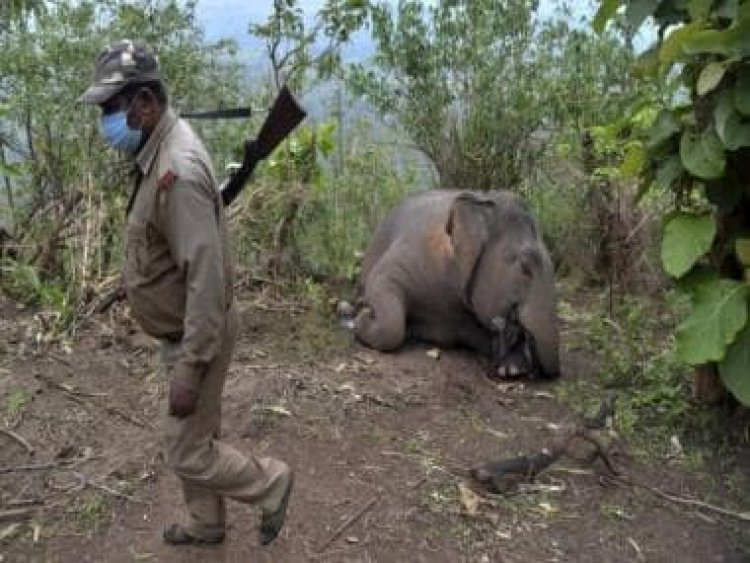A jumbo tragedy: Why Odisha has become dangerous for elephants
A jumbo tragedy: Why Odisha has become dangerous for elephants

Odisha has a jumbo problem and it appears that there’s no solution in sight.
A total of 245 wild elephants have died of unnatural causes in Odisha in just three years, said senior Congress MLA Santosh Singh Saluja in the state Assembly on Wednesday, demanding action against those responsible for their deaths.
The MLA from Kantabanji in Bolangir district added that a total of 784 elephants had died in the past 10 years. While 82 jumbos died in 2019-20, the figure was 77 in 2020-21 and 86 in 2021-22, adding that the reasons for their deaths are road and rail accidents, poaching and others.
Recently, skeletal remains of elephants were exhumed in Athagarh forest division (in Cuttack district). In another incident, an elephant died of electrocution at Asarada forest under Hindola Range on Wednesday. The 20-year-old animal was electrocuted after coming in contact with a wire fence laid down for wild boars.
So, what makes Odisha unsafe for elephants? Here’s what we know.
Jumbo graveyard
Once known to be the pride of Odisha, elephants now see the state as a graveyard.
In 1979, there were 2,044 elephants in Odisha, in the dense forests of Dhenkanal, Deogarh, Mayurbhanj, Keonjhar, Sambalpur, Angul, Sundargarh and Cuttack. In the 2017 census, their number had dropped to 1,976.
Additionally, according to the Wildlife Society of Orissa (WSO), an environmental group, the elephant mortality rate has been rising alarmingly. The average death per year between 1990 and 2000 was around 33, which has increased to 46 per year between 2001 and 2010. Since 2010, the average death record was 76 elephants per year.
Why the decline in elephant population
Environmentalists and animal right activists note that there are several reasons for the deaths of elephants in the state. Poaching, loss of habitat owing to construction and mining and cover-ups of deaths are the primary reasons why elephants are in danger in the state, as per experts.
Elephants are one of the biggest targets of poachers, who eye the tusks of the pachyderms. The state of Odisha has an exceedingly poor track record as far as legal enforcement is concerned. Not a single poacher or ivory trader has been convicted for the last 20 years, notes a report by The Statesman.
There is a seven-year imprisonment term for killing any elephant since it is protected under Schedule I to the Wildlife (Protection) Act, 1972.
Another reason why poaching goes unchecked in Odisha is the cover-ups and concealment by officers in the Forest Department.
The finding of an elephant body whose death is unnatural would mean registering a case, investigating and trying to apprehend the culprits, which is tedious work for an officer and staff who prefers to take up the ‘lucrative’ plantation and eco-tourism work instead of protecting wildlife and punishing offenders. With crores of funds being dumped on the field, forest officers are more interested in such money spending activity instead of running after wildlife poachers.
The fear of being punished with suspension for dereliction of duty prompt lower level staff not to report an unnatural death as seniors of the division do not offer any support or instil confidence.
Another reason that is responsible for the decline in tusker numbers in the state is the changing landscape, owing to mining and construction.
Biswajit Mohanty, secretary, WSO, and former member of the National Board for Wildlife was quoted as telling The Hindu in a 2021 report, “The elephant landscape has changed dramatically in the last two decades. Keonjhar district, which had 112 elephants in 2002, now has only 40 due to large-scale mining.”
“Dhenkanal district, which had 81 elephants in 2002, now has 169, with many getting trapped in the Rengali irrigation canals. Similarly, the 70 odd elephants from the Chandaka sanctuary have virtually abandoned the area and have migrated to Ganjam, Nayagarh and Cuttack districts,” he added.
Also, the rampant mining has destroyed elephant corridors; there have been instances of the tuskers being run over by trucks engaged in mining activity.
Mohanty added that mining is also forcing elephants to use highways in Keonjhar and Jajpur districts to enter the nearby villages in search of food. As a result, the elephant-human conflicts have risen, putting the lives of the majestic animals at risk.
How to save them?
The state has taken a few corrective measures to protect elephants. The chief wildlife warden's office said the government has notified the Mayurbhanja, Sambalpur and Mahanadi elephant conservation projects to check the deaths of the jumbos.
The state has also selected 14 traditional elephant corridors for smooth movement of the pachyderms.
Moreover, it has dug ponds and developed meadows for the elephants, suffering from a lack of habitat.
Anti-poaching and anti-smuggling staff have been deployed in strategic places to prevent the poaching of elephants. Trackers have been deployed to keep a strict vigil on the elephant habitats and their movements.
Forest officials have also held coordination meetings with their counterparts from the energy and railways to come up with measures to prevent the deaths of elephants due to electrocution and from being hit by trains.
Jitasatru Mohanty, a former conservator of forests, in an IANS report said: “There is a lot of work needed to be done to reduce elephant deaths due to electrocution and train hits. The electricity lines should either be undergrounded or the height should be increased to such a level that elephants will not come across the live wires.”
With inputs from agencies
Read all the Latest News, Trending News, Cricket News, Bollywood News,
India News and Entertainment News here. Follow us on Facebook, Twitter and Instagram.
What's Your Reaction?



























































